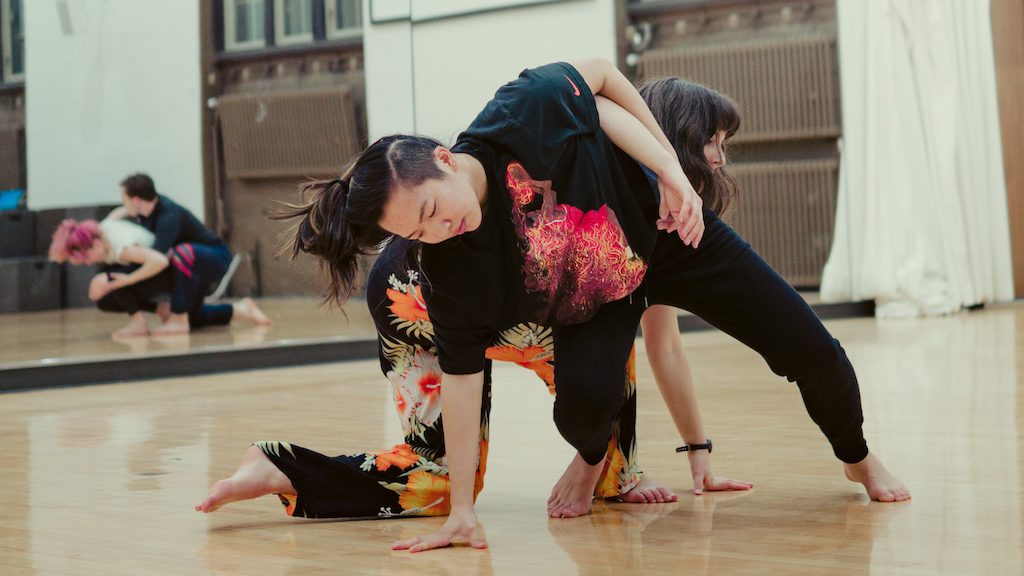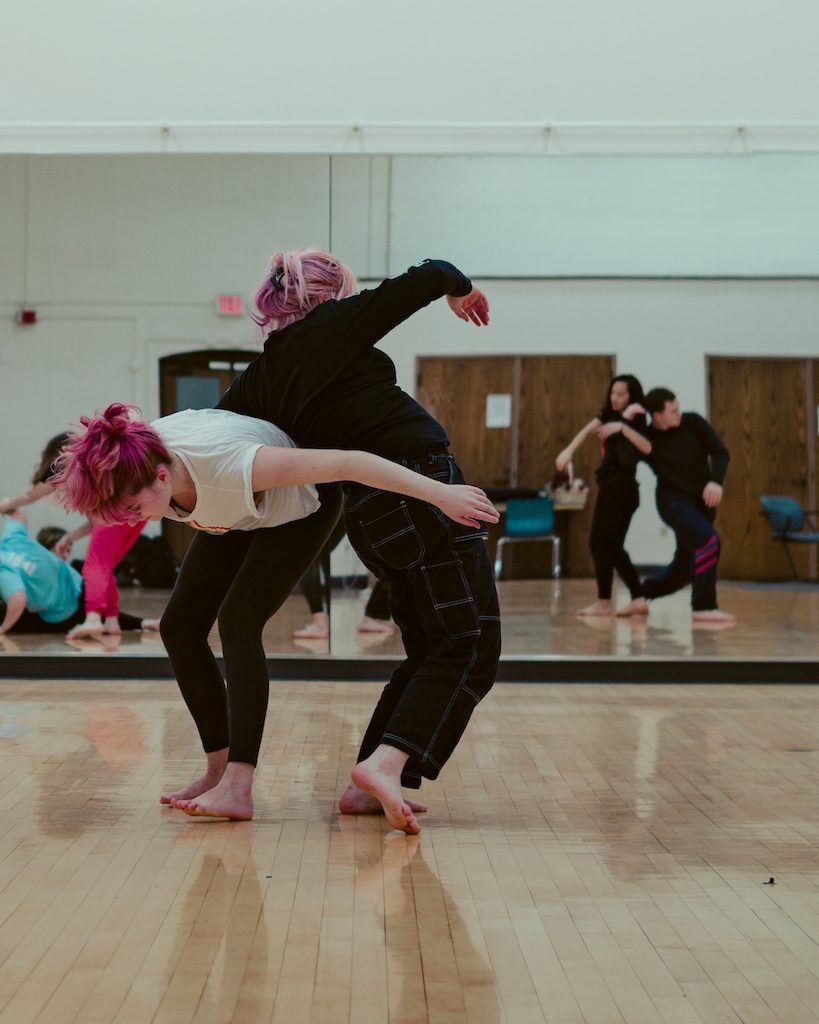David Marchant has been a professional dance artist for over 30 years at local, national and international venues. He has been teaching contemporary dance technique, composition, and improvisation in the Performing Arts Department at Wash U for 25 years. David has also conducted research on the effect of improvisational dancing on symptoms of Parkinson Disease; Eco art, creating site specific performance art in natural environments; among other “novel” ideas for what to do with dance skills, and projects with computer musicians creating motion tracking, interactive performances.
AM: The genre of modern dance has been around for a while now, to the point where modern dance isn’t really all that “novel” anymore. What do you think the future of dance looks like?
DM: The approach to dance as art that gained the now generic name “Modern dance” is now roughly 120 years old. That said, while it is no longer “new” the term Modern Dance does not refer to a codified style, but rather to a philosophy and approach that is founded in the idea of individualism. Styles may become “old,” but the core idea– people creating something from their personal experience is continuously new. So every new artist who takes up the torch is perhaps building on legacies of the past, but still charged with the challenge to find something personally unique and contemporarily relevant. In this way, like Jazz music, dance art continues to evolve, with new artists, new generations, new participants from a wider range of cultures and people. This produces a continuously ongoing regeneration of the art, represented in an always expanding multiplicity of forms. To this extent, it is always renewing. I expect the future of dance will continue the trend of that past century, always emerging from the diverse beauty of humanity.

AM: Do you think our race for the new speeds us towards a better future, or does it distract us from the beauty of the now?
DM: It is not so binary of a choice— a both/and answer applies. Human beings are easily desensitized to any stimulus that becomes too predictable and unchanging. So novelty and innovation reactivate our attention, our presence, and keep the art relevant to new generations. Dance, like many arts, provides ways for us to think about our experience and respond to change in the world and our lives. This inspires us, and invites new people to enter the dialogue, to ‘join the dance.’ This, to me, is positive growth. I have tended to be a proponent of an idealized progression of the future— solving problems, expanding possibilities and accumulating skill, knowledge, and wisdom. And yet, over many years witnessing trends come and go, I also observe that we easily fall into progress traps, assuming it is automatically improved because it’s “new”. This narrative has been marketed to us our whole lives because a love of new things is the fuel of the “economocracy.” Since we are trained to want the new, we may become bored too easily as we are preoccupied with seeking a “better” future, at the risk of missing much of the present, or recognizing what traditions of the past are still relevant and can continue to deepen if given sustained time and practice to fully develop and mature.
AM: How do you think our societal obsession with newness impacts the way we understand ourselves, connect with each other, and treat the world around us?
DM: I think that when we are more “present to the present,” we are obligated to come into our bodies. This rich field of sensation and feeling provides knowledge that thinking alone can’t fully access. If we are ignorant or diminished in our capacity to feel ourselves in the present, we risk not truly connecting to each other and the natural world. And if we can’t feel one another or the world, we are apt to not notice when our perpetual striving becomes toxic. There is a straight line between loss of physical sensory intelligence and mindful connection.

AM: You’ve mentioned being present a lot. How does being present play a role in dance?
DM: Being present is beneficial to the skill of dancing because with the ability to direct attention to what is happening while dancing, we can better craft the movement in terms of control, balance, and expression. If I am too busy thinking about the next move ahead, I make mistakes in the present. Dancing as an activity promotes mindfulness and “presence”— dance is a time art, happening always in the present.
In live performance, the present is the only moment in which the dance can be made. We can imagine what happened in the past or what will come in the future, but we never get another shot at the present to realize our imagination. Dance art keeps me mindful of this simple fact of my perpetual mortality— life is such an ephemeral, fleeting beauty. Practicing presence is one of the main reasons I dance.
Dancing in communities of movers is conducive to a meditative state of mind. In the Contact Improvisation Class (photographed in this article), presence is a fundamental skill. This dance art form was developed in the early 70’s. As a countercultural branch of Modern Dance, it intentionally diverged from focus on the external image, and rather chose to make art of the lived sensory experience unfolding in the present moment. Since we are improvising, keeping one’s mind in a state of presence is valuable because that is when the art is being made. When we can center our attention in the moment, we are more aware, adaptive, and responsive to the flow of the dance. Through experiences like these, people are fully present and respond with authentic intention. To me, this has become the most beautiful thing to witness, whether in a dance or in life.
I feel grateful to work in a profession that is essentially a movement version of an “oral tradition”, handing down the dance from person to person in communities of movers who are physically present with one another.


Armour Magazine is grateful to David Marchant and the members of his Contact Improvisation class for their time, their energy, and their willingness to share such a meaningful space with us.
Photographs Reshad Hamaoun
Words Alexandria Moore
Edits Hannah Dains
Armour Season 24—S/S 2020


